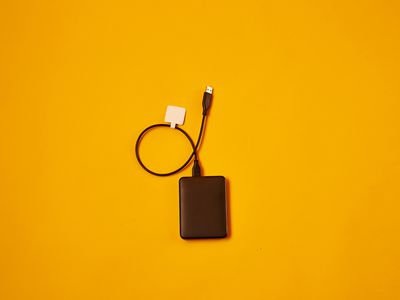
Troubleshooting Steps When Your PC Fails to Start Post-Driver Upgrade - Insights by YL Computing

Mastering Display Customization on Windows [Student]: What Is the Value of (B ) if It Satisfies the Equation (\Frac{b}{6} = 9 )?
The Windows 10 display settings allow you to change the appearance of your desktop and customize it to your liking. There are many different display settings you can adjust, from adjusting the brightness of your screen to choosing the size of text and icons on your monitor. Here is a step-by-step guide on how to adjust your Windows 10 display settings.
1. Find the Start button located at the bottom left corner of your screen. Click on the Start button and then select Settings.
2. In the Settings window, click on System.
3. On the left side of the window, click on Display. This will open up the display settings options.
4. You can adjust the brightness of your screen by using the slider located at the top of the page. You can also change the scaling of your screen by selecting one of the preset sizes or manually adjusting the slider.
5. To adjust the size of text and icons on your monitor, scroll down to the Scale and layout section. Here you can choose between the recommended size and manually entering a custom size. Once you have chosen the size you would like, click the Apply button to save your changes.
6. You can also adjust the orientation of your display by clicking the dropdown menu located under Orientation. You have the options to choose between landscape, portrait, and rotated.
7. Next, scroll down to the Multiple displays section. Here you can choose to extend your display or duplicate it onto another monitor.
8. Finally, scroll down to the Advanced display settings section. Here you can find more advanced display settings such as resolution and color depth.
By making these adjustments to your Windows 10 display settings, you can customize your desktop to fit your personal preference. Additionally, these settings can help improve the clarity of your monitor for a better viewing experience.
Post navigation
What type of maintenance tasks should I be performing on my PC to keep it running efficiently?
What is the best way to clean my computer’s registry?
Also read:
- [New] 2024 Approved Pixel Perfect Windows Recorder, Free
- [Updated] In 2024, Easily Store LinkedIn Videos - Here Are 6 Optimal Tools for It
- 1. 'Easy Guide: Setting Up Your Professional Email Signature on Microsoft Outlook - Tips & Tricks'
- Beware! Recent Microsoft Enhancements Might Intensify Professional Burnout During Evenings – Analysis by ZDNet
- Get Ready: Microsoft Announces Paid Windows 10 Update Model Starting Next Year - Estimated Cost Breakdown
- Innovative Blueprint Top 6 Futuristic MC Villas
- Innovative Interface Enhancement: Displaying Hardware Usage
- Microsoft's Urgent Challenge: Resolving the Windows 11 Dilemma Within a Year | Tech News by ZDNet
- Misconception Debunked: Microsoft Continues Support for Windows Control Panel - ZDNet Report
- Quickly Remove Google FRP Lock on Motorola Moto G34 5G
- Revamp Your Typing Experience with Microsoft's PowerToys - Master Key Mapping
- Streamline Your Video Workflows Selecting the Best Players
- Why Microsoft's Revamped Windows Copilot App Will Delight Users, According to ZDNet Insights
- Win11's Top 5 No-Cost Screen Recorders - Updated Guide
- Windows 11 Nightmare Unraveled: Proven Solutions to Tackle the Ominous Black Screen Fault
- Title: Troubleshooting Steps When Your PC Fails to Start Post-Driver Upgrade - Insights by YL Computing
- Author: Jeffrey
- Created at : 2025-02-28 23:52:33
- Updated at : 2025-03-06 22:36:10
- Link: https://win-hot.techidaily.com/troubleshooting-steps-when-your-pc-fails-to-start-post-driver-upgrade-insights-by-yl-computing/
- License: This work is licensed under CC BY-NC-SA 4.0.